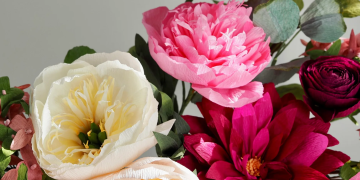Perennials are the backbone of many beautiful gardens, offering vibrant colors, textures, and structure year after year. Unlike annuals, which complete their life cycle in a single season, perennials come back each spring, making them an excellent choice for gardeners looking to create a low-maintenance and long-lasting garden. If you’re new to gardening, growing perennials is a rewarding way to establish a stunning landscape with minimal effort. This beginner’s guide will help you understand the basics of selecting, planting, and caring for perennials, so you can create a garden that thrives season after season.
Why Choose Perennials?
Perennials are popular among gardeners for their resilience and ability to return each year. They typically have a longer lifespan compared to annuals, which means less time spent replanting each season. Perennials also provide year-round interest, as many varieties offer colorful blooms in spring and summer, followed by attractive foliage or seed heads in fall and winter.
Another benefit of perennials is that they are often more drought-tolerant and hardy than annuals, making them ideal for gardeners looking to reduce maintenance and conserve water. By choosing the right mix of perennials, you can create a garden that requires minimal upkeep while providing a variety of colors and textures throughout the year.
Choosing the Right Perennials
Selecting the right perennials for your garden is the first step in creating a thriving perennial bed. Consider your garden’s specific conditions, including the amount of sunlight, soil type, and climate. Some perennials prefer full sun, while others thrive in partial shade. Understanding your garden’s conditions will help you choose perennials that are well-suited to your space and will require less care.
For sunny spots, consider perennials like coneflowers, black-eyed Susans, and daylilies. These plants thrive in full sun and are known for their vibrant colors and drought tolerance. For shaded areas, hostas, ferns, and astilbes are excellent choices, as they add texture and beauty to less sunny parts of your garden.
If you want to attract pollinators, choose perennials like lavender, bee balm, and echinacea, which are loved by bees, butterflies, and hummingbirds. These plants not only add beauty to your garden but also support local wildlife, creating a more diverse and healthy garden ecosystem.
Preparing the Soil
Healthy soil is the foundation of a successful perennial garden. Before planting your perennials, take the time to prepare the soil by removing weeds, loosening the soil, and adding organic matter like compost or aged manure. This will improve soil structure, enhance drainage, and provide essential nutrients for your plants.
Perennials prefer well-draining soil, as standing water can lead to root rot. If your soil is heavy clay, consider amending it with sand or organic matter to improve drainage. On the other hand, if your soil is sandy, adding compost can help retain moisture and provide nutrients for your plants.
Planting Your Perennials
The best time to plant perennials is in the spring or fall when temperatures are cooler and the plants have time to establish their roots before the extreme heat or cold of summer or winter. When planting, dig a hole that is slightly wider than the plant’s root ball and about the same depth. Gently remove the perennial from its container and loosen the roots before placing it in the hole. Fill in around the plant with soil, making sure the crown (where the stems meet the roots) is level with the soil surface.
After planting, water your perennials thoroughly to help them settle into their new home. Adding a layer of mulch around the base of the plants can help retain moisture, suppress weeds, and regulate soil temperature. Organic mulches like shredded bark or straw are ideal, as they break down over time and add nutrients to the soil.
Watering and Fertilizing
While perennials are generally low-maintenance, proper watering is crucial during their first growing season as they establish their root systems. Water deeply once or twice a week, depending on rainfall and soil conditions. Once established, many perennials are drought-tolerant and will only need occasional watering during dry spells.
Fertilizing perennials is usually not necessary if you have rich, well-amended soil. However, if your soil is lacking in nutrients, you can apply a balanced, slow-release fertilizer in the spring as new growth begins. Avoid over-fertilizing, as this can lead to excessive foliage growth at the expense of flowers.
Pruning and Deadheading
Pruning and deadheading are important tasks that help keep your perennials looking their best. Deadheading, or removing spent blooms, encourages the plant to produce more flowers and prevents it from putting energy into seed production. Simply use a pair of clean scissors or pruners to cut off faded flowers just above a set of healthy leaves.
In the fall, you may choose to cut back some perennials to tidy up the garden and prevent diseases. However, leaving some plants standing through the winter can provide shelter for beneficial insects and add visual interest to your garden during the colder months. Plants like coneflowers and ornamental grasses have attractive seed heads that can be left intact until spring.
Dividing Perennials
Many perennials benefit from being divided every few years. Dividing perennials helps rejuvenate the plants, encourages more vigorous growth, and prevents them from becoming overcrowded. Signs that your perennials need dividing include reduced flowering, smaller blooms, or a dead center in the middle of the plant.
The best time to divide perennials is in the spring or fall when temperatures are cooler. To divide a perennial, carefully dig up the entire plant and gently separate it into smaller sections, making sure each section has healthy roots and shoots. Replant the divisions in your garden or share them with friends and neighbors.
Pest and Disease Management
Perennials are generally hardy and resistant to pests and diseases, but problems can still arise. The best way to prevent pests and diseases is to choose plants that are well-suited to your garden conditions and to maintain good garden hygiene. Remove any dead or diseased plant material promptly, and avoid overhead watering, as wet foliage can encourage fungal diseases.
If you do encounter pests, such as aphids or slugs, there are several natural ways to manage them. Insecticidal soap can be used to treat aphid infestations, while diatomaceous earth or copper tape can help deter slugs. Encouraging beneficial insects, like ladybugs and lacewings, can also help keep pest populations in check.
Creating a Perennial Garden Design
A well-designed perennial garden can provide year-round beauty with minimal effort. When planning your garden, consider the height, color, and bloom time of each plant. Place taller perennials, such as hollyhocks or delphiniums, at the back of the garden bed, with shorter plants like coral bells or creeping phlox in the front.
To create a cohesive look, choose a color palette that complements your home and landscape. You can create a monochromatic garden with shades of a single color, or mix complementary colors for a more vibrant display. Stagger the bloom times of your perennials to ensure that there is always something in bloom throughout the growing season.
In addition to flowers, consider adding foliage plants to your perennial garden. Plants like hostas, ferns, and heucheras provide interesting textures and colors, even when flowers are not in bloom. By incorporating a mix of flowering and foliage plants, you can create a garden that looks beautiful from spring to fall.
Low-Maintenance Perennials for Beginners
If you’re new to gardening, start with some easy-to-grow perennials that require minimal care. Here are a few great options for beginners:
- Daylilies: These hardy perennials produce vibrant flowers throughout the summer and are very drought-tolerant.
- Black-Eyed Susans: Bright yellow flowers that bloom from mid-summer to fall, attracting pollinators to your garden.
- Sedum (Stonecrop): A succulent perennial that thrives in poor soil and requires very little water, making it ideal for low-maintenance gardens.
- Hostas: Perfect for shaded areas, hostas have attractive foliage and are easy to grow with minimal care.
- Lavender: Not only does lavender add fragrance to your garden, but it is also drought-tolerant and attracts pollinators.
Embrace the Beauty of Perennials
Growing perennials is a rewarding way to create a garden that returns year after year with minimal effort. By choosing the right plants for your garden conditions, preparing the soil, and providing proper care, you can enjoy a beautiful and diverse landscape that requires little upkeep. Whether you’re planting a small border or a large flower bed, perennials are an excellent choice for any gardener looking to add lasting beauty to their outdoor space.










